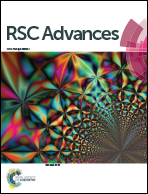The role of Ni doping on photoelectric gas-sensing properties of ZnO nanofibers to HCHO at room-temperature
Abstract
Ni-Doped ZnO nanofibers have been synthesized by a simple, facile electrospinning method. The structure and morphology of the products were characterized by SEM, HRTEM and XRD analysis. X-ray photoelectron spectroscopy (XPS) confirmed that Ni2+ ions exist in the ZnO nanofiber structures. The photoelectric gas-sensing tests reveal that the response was significantly enhanced by Ni doping, and the 0.7% molar ratio Ni-doped sample (NZ0.7) exhibits the highest response of 532.7% to 100 ppm HCHO at room temperature. Photoluminescence (PL) measurements show that there are more donors in Ni-doped ZnO nanofibers by the introduction of Ni2+ ions. Furthermore, the surface photovoltage (SPV) and transient photovoltage (TPV) tests indicated that Ni doping can effectively enhance the donor density, which could facilitate charge separation and transport in the semiconductor, and promote photogenerated holes to move toward the irradiated surface of the samples. These results contribute to the photocatalytic oxidation of HCHO so as to achieve higher gas-sensing properties for Ni-doped ZnO nanofibers.


 Please wait while we load your content...
Please wait while we load your content...